Plains bison
- December 29, 2023
- 0 comment
The Plains bison, scientifically known as Bison bison bison, is a majestic and iconic species that once roamed the vast grasslands of North America in colossal herds. These formidable creatures are easily identified by their massive, humped shoulders, which support a shaggy coat of dark brown fur. The characteristic horns, or “bosses,” sweep back from their heads in a distinctive manner. Adult males, or bulls, can weigh up to 2,000 pounds, making them one of the largest land mammals in North America. The females, or cows, are slightly smaller but still imposing in size. These herbivores are well-adapted to their grassland habitat, utilizing their strong, muscular bodies to graze on the abundant prairie vegetation.
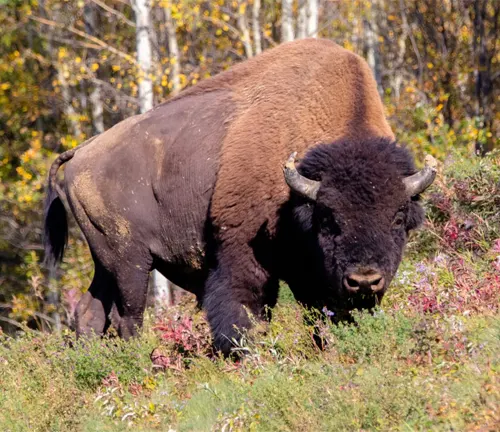
Plains bison historically occupied an extensive range, stretching from the Great Plains of Canada down to northern Mexico. However, due to overhunting and habitat loss in the 19th century, their numbers plummeted dramatically. Conservation efforts and reintroduction programs have since contributed to the recovery of the Plains bison population, although they are now primarily confined to protected areas such as national parks and reserves. Their presence not only preserves a vital part of North America’s natural heritage but also plays a crucial role in maintaining the ecological balance of grassland ecosystems. The Plains bison’s endurance as a symbol of strength and resilience serves as a testament to ongoing efforts to safeguard and restore the biodiversity of the region.
| Attribute | Description |
|---|---|
| Scientific Name | Bison bison bison |
| Common Name | Plains Bison |
| Adult Male Weight | Up to 2,000 pounds |
| Adult Female Weight | Slightly smaller than males |
| Physical Features | Humped shoulders, dark brown shaggy fur, sweeping horns |
| Habitat | Grasslands, prairies |
| Range | Historically from Canada to northern Mexico |
| Conservation Status | Recovering, primarily in protected areas |
| Ecological Importance | Vital for maintaining grassland ecosystem balance |
| Conservation Challenges | Overhunting, habitat loss |
| Conservation Efforts | Reintroduction programs, protected areas |
A Glimpse into the World of Plains Bison
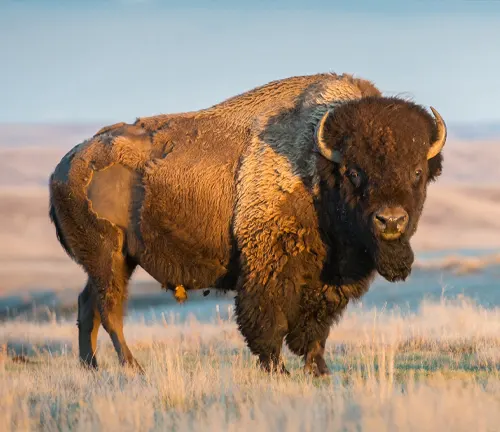
General Biology
The Plains bison, scientifically known as Bison bison bison, stands as a symbol of North America’s untamed wilderness. With their distinctive humped shoulders and dark brown, shaggy coats, these colossal creatures are the epitome of strength and resilience. Adult males, or bulls, can weigh up to a staggering 2,000 pounds, making them one of the largest land mammals in the region. Their muscular bodies are well-adapted for the grassland habitat they once freely roamed.
Reproduction
The reproductive life of Plains bison is a crucial aspect of their survival. Female bison, known as cows, give birth to a single calf after a gestation period of approximately nine months. Calves are born in the spring and quickly learn to navigate the grassy terrain alongside their protective mothers. The mating season, or rut, typically occurs in late summer, with dominant bulls engaging in impressive displays of strength and dominance to secure mating opportunities.
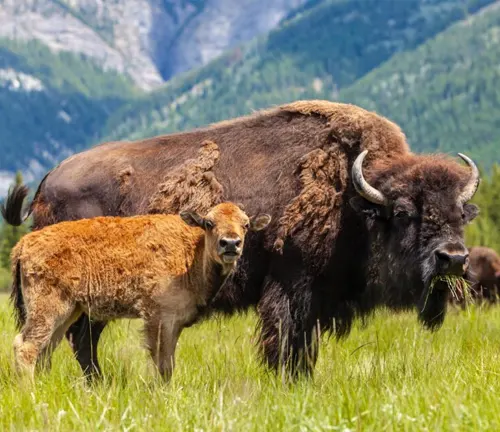
Behavior
Plains bison exhibit fascinating behavioral patterns that contribute to their survival in the wild. These herbivores are social animals, forming tight-knit groups or herds. Within these herds, a hierarchical structure exists, with dominant bulls leading and protecting the group. Their powerful build and agility make them formidable runners, and they can reach speeds of up to 35 miles per hour when necessary. Despite their massive size, bison are known for their agility and surprisingly swift movements.

Habitat
Historically ranging from the Great Plains of Canada to northern Mexico, Plains bison once roamed freely across vast expanses of grasslands. Today, conservation efforts have confined them to protected areas such as national parks and reserves. These habitats mimic their natural grassland environment and allow them to exhibit their natural behaviors, contributing to the preservation of this iconic species.
Food Habits
Plains bison are herbivores with a specialized diet adapted to the grasslands they inhabit. Grazing on a variety of grasses and sedges, they play a crucial role in shaping the landscape through their feeding habits. Their powerful jaws and digestive systems are well-suited to efficiently extract nutrients from the fibrous vegetation that makes up the bulk of their diet.
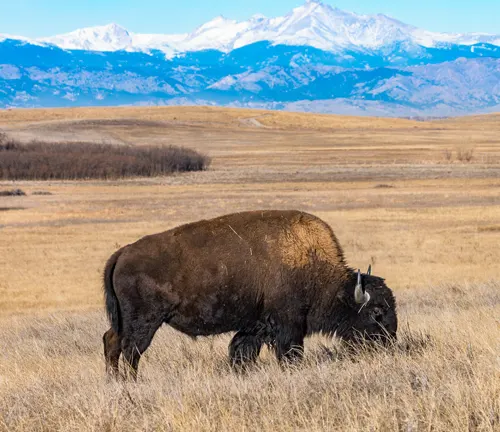
Voice, Sounds, Tracks, and Signs
While Plains bison are not known for elaborate vocalizations, they communicate through a variety of sounds. Grunts, snorts, and bellows serve as expressions of dominance, mating readiness, or distress. Their tracks and signs, including wallowing areas and dust baths, provide insight into their daily lives and territorial behaviors. These markings tell a story of their presence in the landscape.
Distribution
Once ranging widely across North America, Plains bison faced a dramatic decline in the 19th century due to overhunting and habitat loss. Conservation initiatives and reintroduction programs have played a pivotal role in restoring their populations. Today, Plains bison are found in designated reserves and national parks, where they continue to captivate the imaginations of those who seek to preserve the natural legacy of North America.
Different Species
Plains Bison
(Bison bison bison)
This subspecies is commonly found in the grasslands of North America, historically ranging from Canada to Mexico. They are characterized by their massive size, distinctive humped shoulders, and dark brown, shaggy fur.
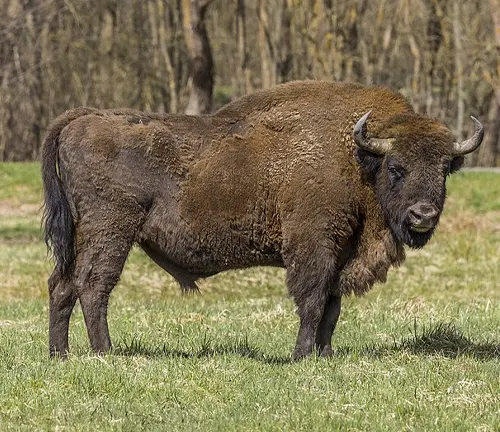

Wood Bison
(Bison bison athabascae)
The Wood bison is the other subspecies of American bison and is adapted to a more wooded habitat. Historically, they inhabited the boreal forests and subarctic regions of North America. Wood bison are generally larger and heavier than Plains bison, with a different horn shape and a more massive build.
Frequently Asked Questions (FAQs)
1. What is a Plains Bison?
Plains Bison (Bison bison bison) is a subspecies of the American bison, characterized by its massive size, humped shoulders, and dark brown, shaggy fur. It historically roamed the grasslands of North America.
2. Where do Plains Bison live today?
Plains Bison are primarily found in protected areas such as national parks and reserves. Conservation efforts and reintroduction programs aim to sustain their populations in environments that mimic their natural grassland habitat.
3. What is the difference between Plains Bison and Wood Bison?
While both are subspecies of the American bison, Plains Bison inhabit grasslands, whereas Wood Bison are adapted to more wooded habitats. Wood Bison are generally larger with different horn shapes and a more massive build.
4. How do Plains Bison contribute to ecosystems?
Plains Bison play a crucial role in shaping grassland ecosystems through their grazing habits. They help maintain the balance of vegetation, create habitats for other species, and contribute to nutrient cycling.
5. What is the conservation status of Plains Bison?
Plains Bison faced significant population declines in the 19th century but has seen recovery through conservation efforts. They are now classified as near-threatened, with ongoing initiatives to protect and restore their populations.
6. How do Plains Bison communicate?
Plains Bison communicate through various sounds, including grunts, snorts, and bellows. While not known for elaborate vocalizations, these sounds convey messages related to dominance, mating readiness, or distress.
7. What is the lifespan of Plains Bison?
In the wild, Plains Bison generally have a lifespan of around 15 to 20 years. Factors such as predation, habitat conditions, and human-related activities can influence their life expectancy.
8. Why are Plains Bison important culturally?
Plains Bison hold cultural significance for indigenous peoples and are considered sacred in many traditions. They have played a crucial role in the livelihoods, spirituality, and cultural practices of various Native American tribes.
9. Can Plains Bison be domesticated?
While Plains Bison are closely related to domestic cattle, they are wild animals and not easily domesticated. Attempts to domesticate bison have been limited, and they are primarily managed in conservation settings.
10. How can I support Plains Bison conservation?
Supporting conservation organizations, visiting responsibly managed reserves, and staying informed about bison conservation issues are ways to contribute. Responsible ecotourism and respecting bison habitats also play a role in their conservation.



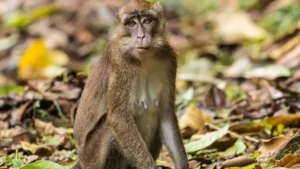


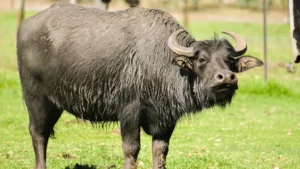
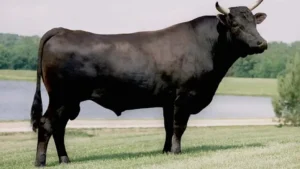
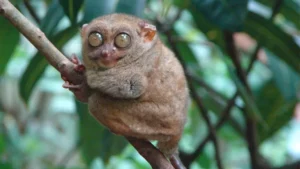
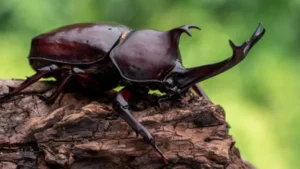
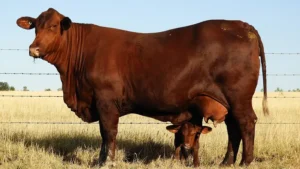
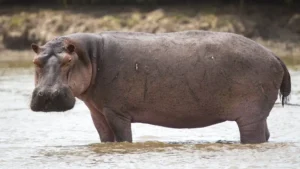

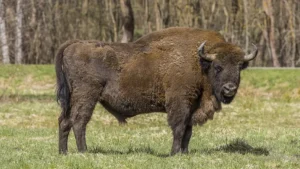
Leave your comment